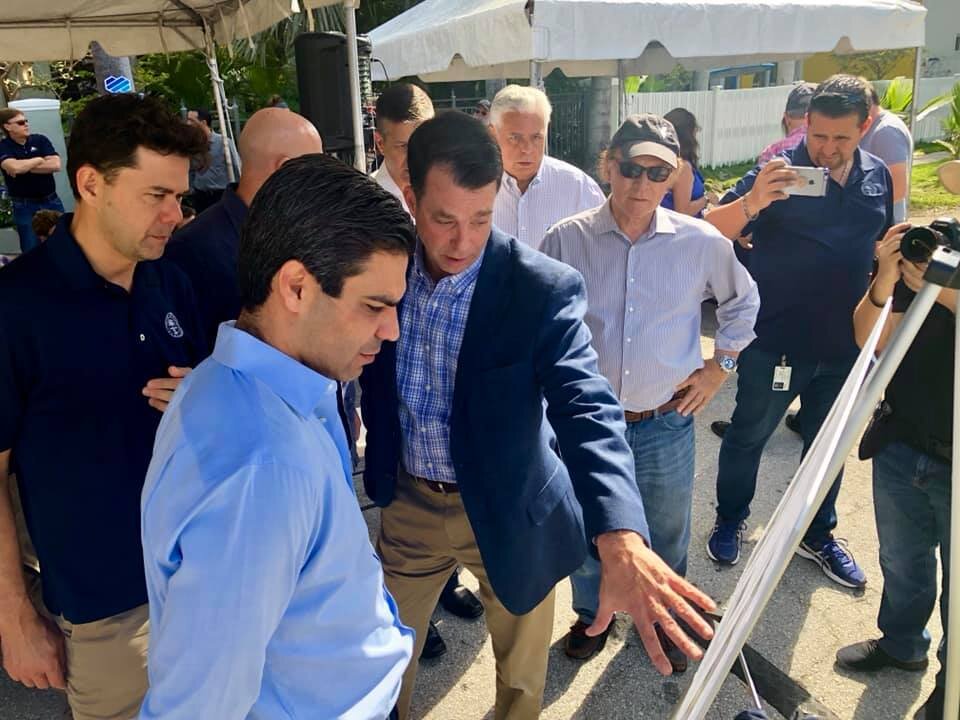Additional Resources
Featured Case Studies
Each of the cases below, organized by the corresponding Approaches coming out of the Exchange, can serve as inspiration for what is possible in the San Diego region. Click on the cases and links below to learn more.
cases inspiring approach 1
San Diego Future Fund
Waikiki, Hawaii
The Special Improvement District brings together local business and property owners as well as state and local governments in an innovative partnership to fund coastal projects. This public private model allows partners to jointly fund priority projects that build coastal resilience, pooling private investments along with matching government funding.
San Francisco Bay Area, California
The 2016 San Francisco Bay Clean Water, Pollution Prevention and Habitat Restoration Measure, or Measure AA, funds habitat restoration projects, including flood protection projects as well as shoreline access and recreational amenity projects, for San Francisco Bay. The Measure includes a 20-year, $12 parcel tax across 9 Bay Area counties to raise approximately $25 million annually. Funding decisions are made by the San Francisco Bay Restoration Authority, an entity created by California’s state legislature with the power to raise funds as well as oversight authority.
Miami, Florida
The $400 million general obligation Miami Forever Bond was approved by voters in 2017, and allows the City to fund projects that address critical priorities: sea level rise and flood prevention; roadways; parks and cultural facilities; public safety; and affordable housing. All projects drive towards a single unifying vision and guiding themes. A Citizens Oversight Board provides additional transparency and accountability to inform project selection and oversight.
cases inspiring Approach 2
Regional Resilience Roadmap
Florida
Since 2010, the partnership formalized through the Southeast Florida Regional Climate Change Compact has enabled coordination in climate mitigation and adaptation across four member counties in the region. The Compact’s goals are to facilitate sharing of tools and resources, mobilize public support, and coordinate activities among local jurisdictions in order to amplify impact.
Oakland, California
Bringing together the City of Oakland, County of Alameda, Oakland Unified School District, and other local educational authorities, the Youth Ventures Joint Powers Authority (JPA) coordinates authorities and consolidates resources around five priority areas to improve outcomes for Oakland’s youth and families, with a focus on those who have traditionally experienced disparities. These “Impact Tables” around the priority areas of health, education, wealth, housing, and safety bring together government and community partners and allow for development of initiatives that cross silos. The City tracks indicators corresponding with each Impact Table on its citywide dashboard.
Houston, Texas
This nonprofit is responsible for redevelopment and stewardship of 10 square miles of this prized natural asset in the Houston area, which includes waterfront and green spaces that flow through downtown as well as the Port. With philanthropic support as well as government partnerships, Buffalo Bayou Partnership (BBP) is responsible for major capital improvements, conservation efforts, and recreational programming that connects residents to the Bayou. BBP also operates and maintains Buffalo Bayou Park, which is funded annually as a Tax Increment Reinvestment Zone.
New Orleans, Louisiana
The Design Review Committee, whose membership spans City agencies and departments, meets monthly to review and inform design of capital projects. This regular coordination improves project design and integration across government agencies, leading, for example, to projects with greater resilience benefits.
Los Angeles, California
Through an Executive Order launched in the Resilient Los Angeles Strategy, Mayor Garcetti established Chief Resilience Officers in each City department. This cohort of officials serves as a cross-agency coordinating body that works with the City’s Chief Resilience Officer to implement resilience initiatives and embed resilience across City government.
East Coast
President Obama created the Hurricane Sandy Rebuilding Task Force in the wake of the devastating storm, appointing Secretary of Housing and Urban Development Shaun Donovan as Chair. The Task Force promoted cabinet-level coordination in advancing a resilient recovery for the affected region, supporting communities in building back better able to withstand future shocks and stresses. The Task Force released a Rebuilding Strategy that informed spending of federal recovery dollars.
cases inspiring Approach 3
Oceanside Littoral Cell Design Lab
Norfolk, Virginia
RISE Resilience Innovations cultivates resilience solutions that simultaneously address coastal climate risks while creating economic opportunity. The nonprofit accelerator holds challenges and provides support, including space, technical assistance, funding, and more, to promising entrepreneurs and start-ups that address coastal resilience challenges.
The Netherlands
In the Netherlands, the Dutch government worked with scientists, local officials, and other stakeholders to construct the Sandmotor: a peninsula of 21.5 million cubic meters of sand off the Dutch coast that combats coastal erosion. Previously, rapid erosion of the coastline threatened nearby coastal cities, requiring repeated interventions such as nourishment and replenishment that were both costly and disruptive to natural ecosystems. The Sandmotor works with rather than against nature, capitalizing upon the natural movements of wind, tides, and ocean currents to replenish sand and protect the coastline.
Mississippi River Delta, Louisiana
Changing Course brought together experts in engineering, science, planning, and design for a competition focused on building a more resilient and sustainable delta ecosystem in the Lower Mississippi River and addressing intersecting environmental, economic, and community challenges. In partnership with the State of Louisiana and the U.S. Army Corps of Engineers, and with philanthropic support from multiple funding partners, the competition resulted in three winning designs that informed later planning processes and projects in the region.
cases inspiring Approach 4
San Diego Future Campaign
Baltimore
The City of Baltimore, in partnership with the nonprofit, private sector, and academic communities, solicited and tested creative new design approaches for gathering safely under social distancing guidelines. Ten winning concepts selected by an expert panel are featured in a Design for Distancing handbook, and are now being piloted across Baltimore. City residents are currently able to experience these interventions and provide feedback so that designers can learn and iterate upon pilot projects.
Louisiana
The State of Louisiana partnered with the Foundation for Louisiana to launch a community-centered planning process in at-risk coastal communities. Over the course of 71 public events that engaged almost 3,000 residents across 6 parishes, multi-sector partners developed community-specific plans and projects in a holistic way that leveraged grassroots engagement to envision the future of coastal communities directly with residents.
East Coast
This design competition was launched by the U.S. Department of Housing and Urban Development in collaboration with nonprofits and philanthropy following Hurricane Sandy’s devastating impact on the region. The process combined global design expertise with community engagement, resulting in 7 projects to help the region recover and build resilience, as well as an innovative model that has since been replicated. Harvesting lessons from implementation of these projects, RBD developed Elements of Effective Engagement: 12 Best Practices of Community Engagement, a guidebook that details best practices along with numerous featured examples.
San Diego
Climate Education Partners (CEP) was one of six National Science Foundation-funded projects in the country to conduct climate education research and outreach activities. Developed and implemented by a team of world class science educators and researchers, behavioral science researchers, communications experts, and regional leaders, CEP aimed to develop an integrated climate literacy model in order to build a community of concerned leaders and stakeholders working across the political spectrum to broaden understanding of San Diego relevant climate science and impacts and find mutually beneficial solutions. After five years, CEP concluded and developed a community toolbox for other communities looking to leverage these tools, frameworks and communications best practices.




















